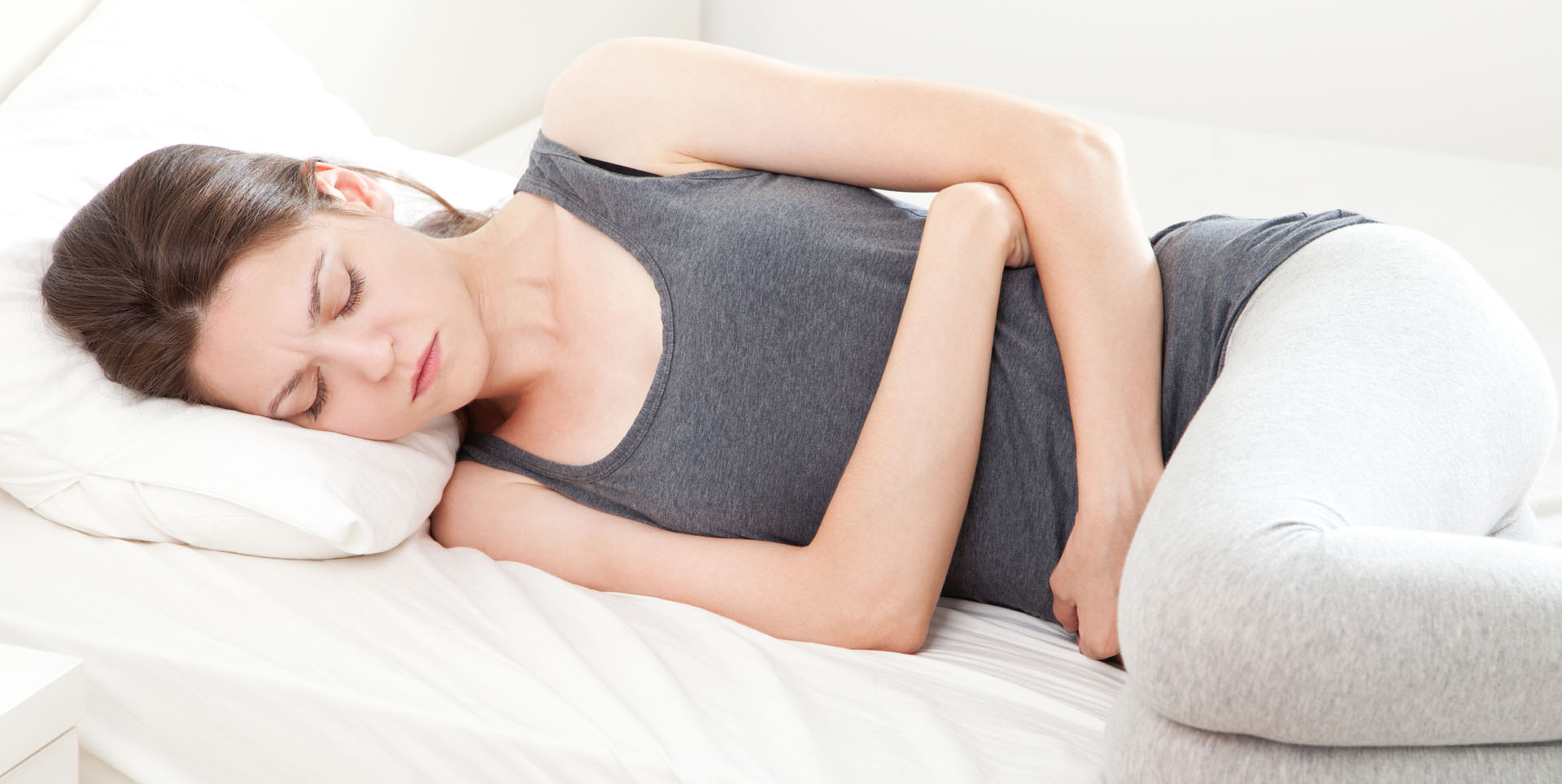Solutions for PMS (And What Gut Health Has to Do With it!)

PREMIUM CONTENT for MEMBERS ONLY
By Selin Bilgin
Are you a gal who dreads that time of the month, or have someone in your life that suffers from PMS? My hope is that you will be delighted at how simple it can be to bring your body back to balance with today’s article and relieve yourself of challenging PMS symptoms. Are you ready?
“Happy gut, happy hormones”
Many of us have been convinced that PMS is a normal part of being a woman. The evidence especially seems very real when we experience the fatigue, bloating, cramps, mood swings, acne, cravings (and more!) that can come with it. Is it a part of being a woman – or is there something else that’s at play? When we dive deeper, the research shows that an imbalanced gut microbiome (known as dysbiosis) can be directly linked to hormonal imbalances.1 To then make this a perfect vicious cycle, hormonal imbalances such excess amounts of estrogen, can then affect our gut, in turn causing bloating, fluid retention and slower digestion.2
Now that I’ve told you the “bad” news (it’s better to ask for forgiveness than permission, right?) let’s get right into good news. Together we will go over a few practical steps you can take today in order to balance not only your hormones, but also your gut microbiome.
“Pay attention to your estrogen-liver-gut microbiome loop…”
Estrogen, in particular estradiol, is one of our primary female hormones, and when in balance – we feel in balance! If estrogen however is in excess (we are either intaking excess estrogen through xenoestrogens – see later in the post) or we are not clearing it properly from our system. Why we would not be clearing estrogen properly comes back to our diet (lack of fiber, consuming an excessive number of inflammatory foods, etc.), excessive movement (or lack thereof), our gut health, stress levels, as well as liver health. The surprising role of the gut microbiome in this estrogen liver gut axis has only recently been addressed.
Your liver is responsible for metabolizing and eliminating your hormones, namely in phases 1 and 2 of estrogen detoxication.3 Liver metabolites of estrogen are secreted with the bile into the gut, where they are further modified by our gut microbes into absorbable estrogen molecules, which can reenter the systemic circulation. Depending on the composition of your gut microbiome, this estrogen liver gut loop plays an important role in determining the levels of estrogens in your body. This regulatory mechanism explains why your diet and your gut microbiome may be involved in your PMS symptoms. Thankfully, you can eat your way to a healthier estrogen balance!
There is no question that eating a diet rich in a large variety of plant-based foods, including vegetables, fruits, in particular dark berries, seeds and nuts, without added sugar and highly processed ingredients, and with very limited amounts of animal-based products is the best thing you can do for the health of your gut microbiome and your gut health. Even though controlled research studies to prove the benefits of such a diet on PMS symptoms are currently not available, there is good reason to believe that such a diet will have a beneficial effect on contributions of the gut microbiome to estrogen regulation.
“Xenoestrogens are important! What are xenoestrogens?”
Xenoestrogens are simply “foreign” estrogens, substances that are similar in molecular structure to estrogen and can interact with estrogen receptors in our bodies, causing potentially hazardous outcomes. These xenoestrogens are metabolized by the same gut microbes that metabolize our own estrogens, and depending on the health of your gut microbiome, the impact on your estrogen physiology may vary significantly. When we have more estrogen in the body than we are able to clear, we may start to see challenges like PMS symptoms occur.
Xenoestrogens may seem foreign, however are very common in our daily lives. One source are phytoestrogens, estrogen-like molecules contained in plant-based products such as soybeans. Another source can be found in certain plastics, pesticides, chemicals, and water systems. To avoid harmful exposure to xenoestrogens is to avoid plastic water bottles (stainless steel and glass are excellent alternatives), use a water filter like Santevia or Brita (I love and use both), and aim to use natural products on your body and home as much as possible. There are many amazing companies out there who are providing clean and safe products.
“We know that exercise feels great, but what impact could it possibly have on your hormones and gut health?”
A 2017 study, by Carlo Bressa and colleagues, studied two groups of women between the ages of 18 and 40, and demonstrated that physical exercise “can modify the composition of gut microbiota” in a beneficial way.
The active participants performed at least 10 hours of physical exercise over a 7-day period during the trial, and the sedentary group performed less than 30 minutes of moderate exercise, 3 times per week.
The results? Eleven genera (a taxonomic rank of bacteria) were “significantly different between active and sedentary women”. Also, the active group of women had “higher abundance of health-promoting bacterial species, including Faecalibacterium prausnitzii, Roseburia hominis and Akkermansia muciniphila”. This indicates that our gut microbiome prefers movement!
While we do not yet know if a specific type of exercise benefits us the most, most resources say to get at least 150 minutes of moderate aerobic activity or 75 minutes of vigorous aerobic activity per week. This could be any form of movement – and make it fun! Belly dancing, pickle ball, snow shoeing, and surfing all count as forms of exercise!
References
- Baker JM, Al-Nakkash L, Herbst-Kralovetz MM. Estrogen-gut microbiome axis: Physiological and clinical implications. Maturitas. 2017 Sep;103:45-53. doi: 10.1016/j.maturitas.2017.06.025. Epub 2017 Jun 23. PMID: 28778332.
- Bashir, K., & Choi, J. S. (2017). Clinical and Physiological Perspectives of β-Glucans: The Past, Present, and Future. International journal of molecular sciences, 18(9), 1906.
- Pandey, K. B. & Rizvi, S. I. (2009, November – December). Plant polyphenols as dietary antioxidants in human health and disease. Oxidative Medicine and Cellular Longevity, 2(5), 270-278
- Madrigal-Santillán, E., Madrigal-Bujaidar, E., Álvarez-González, I., Sumaya-Martínez, M. T., Gutiérrez-Salinas, J., Bautista, M., Morales-González, Á., García-Luna y González-Rubio, M., Aguilar-Faisal, J. L., & Morales-González, J. A. (2014). Review of natural products with hepatoprotective effects. World journal of gastroenterology, 20(40), 14787–14804.
- Campbell SC, Wisniewski PJ, Noji M, McGuinness LR, Häggblom MM, Lightfoot SA, Joseph LB, Kerkhof LJ. The Effect of Diet and Exercise on Intestinal Integrity and Microbial Diversity in Mice. PLoS One. 2016 Mar 8;11(3):e0150502. doi: 10.1371/journal.pone.0150502. PMID: 26954359; PMCID: PMC4783017.
- Deng, F., Li, Y., & Zhao, J. (2019). The gut microbiome of healthy long-living people. Aging, 11(2), 289–290.
- Paterni I, Granchi C, Minutolo F. Risks and benefits related to alimentary exposure to xenoestrogens. Crit Rev Food Sci Nutr. 2017 Nov 2;57(16):3384-3404. doi: 10.1080/10408398.2015.1126547. PMID: 26744831; PMCID: PMC6104637.
- Chen, Karen & Madak Erdogan, Zeynep. (2016). Estrogen and Microbiota Crosstalk: Should We Pay Attention?. Trends in endocrinology and metabolism: TEM. 27. 10.1016/j.tem.2016.08.001.
- Bressa, C., Bailén-Andrino, M., Pérez-Santiago, J., González-Soltero, R., Pérez, M., Montalvo-Lominchar, M. G., Maté-Muñoz, J. L., Domínguez, R., Moreno, D., & Larrosa, M. (2017). Differences in gut microbiota profile between women with active lifestyle and sedentary women. PloS one, 12(2), e0171352.
- Monda, V., Villano, I., Messina, A., Valenzano, A., Esposito, T., Moscatelli, F., Viggiano, A., Cibelli, G., Chieffi, S., Monda, M., & Messina, G. (2017). Exercise Modifies the Gut Microbiota with Positive Health Effects. Oxidative medicine and cellular longevity, 2017, 3831972.
- Mach, N., & Fuster-Botella, D. (2017). Endurance exercise and gut microbiota: A review. Journal of sport and health science, 6(2), 179–197.
 Selin Bilgin is a speaker, podcast host, author, and the founder of Luscious Living: Where Personal Growth Meets Wellness.
Selin Bilgin is a speaker, podcast host, author, and the founder of Luscious Living: Where Personal Growth Meets Wellness.